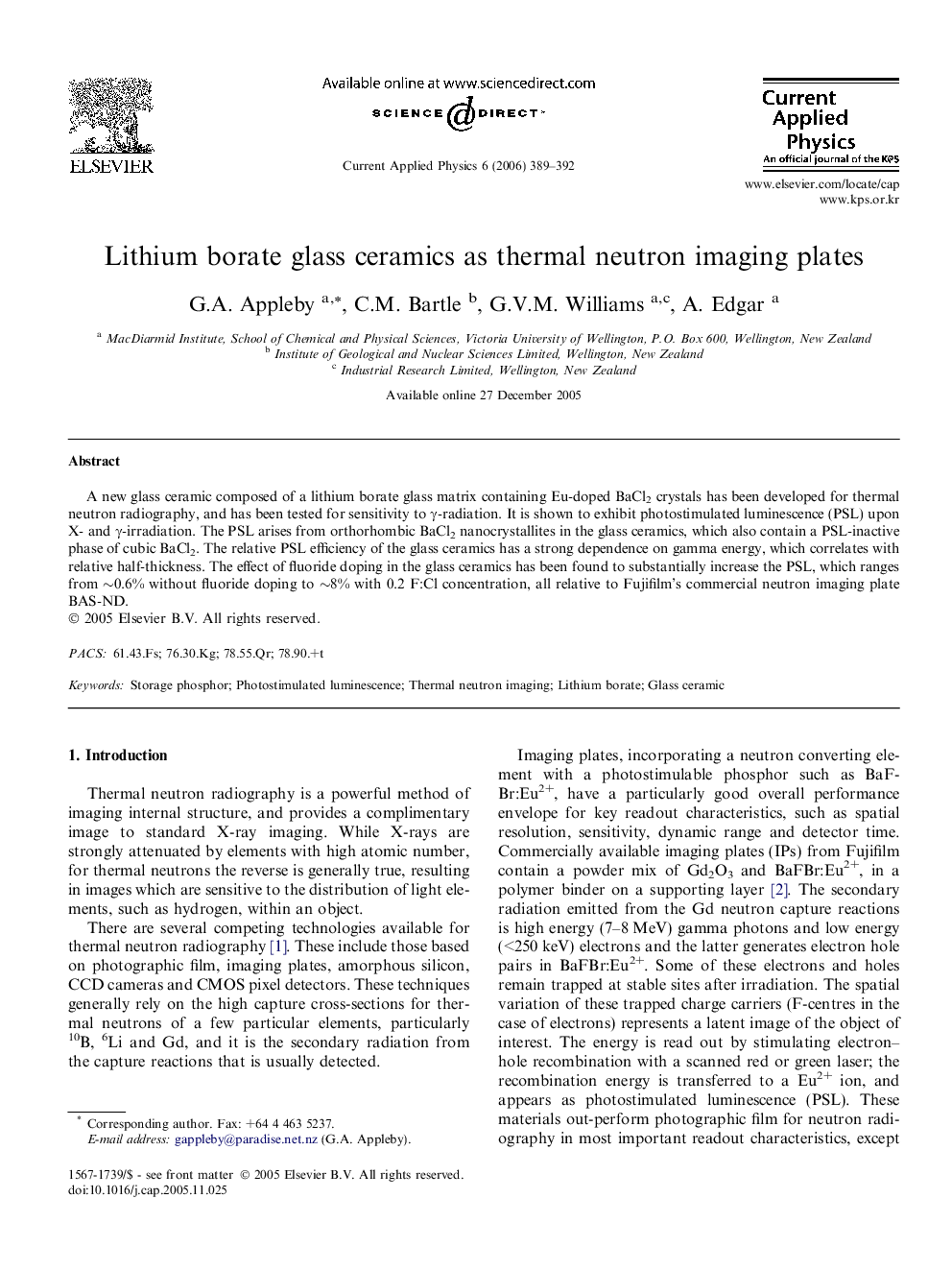| Article ID | Journal | Published Year | Pages | File Type |
|---|---|---|---|---|
| 1787971 | Current Applied Physics | 2006 | 4 Pages |
A new glass ceramic composed of a lithium borate glass matrix containing Eu-doped BaCl2 crystals has been developed for thermal neutron radiography, and has been tested for sensitivity to γ-radiation. It is shown to exhibit photostimulated luminescence (PSL) upon X- and γ-irradiation. The PSL arises from orthorhombic BaCl2 nanocrystallites in the glass ceramics, which also contain a PSL-inactive phase of cubic BaCl2. The relative PSL efficiency of the glass ceramics has a strong dependence on gamma energy, which correlates with relative half-thickness. The effect of fluoride doping in the glass ceramics has been found to substantially increase the PSL, which ranges from ∼0.6% without fluoride doping to ∼8% with 0.2 F:Cl concentration, all relative to Fujifilm’s commercial neutron imaging plate BAS-ND.
